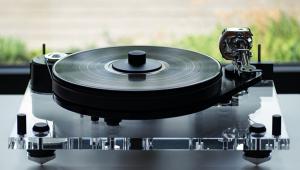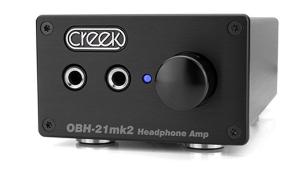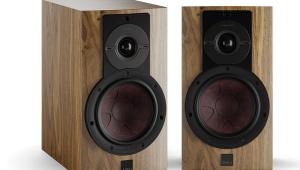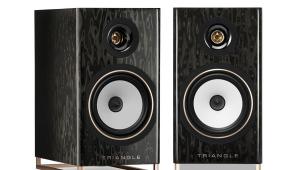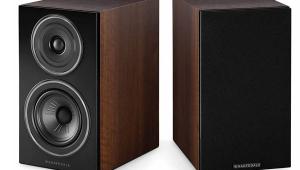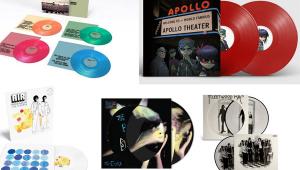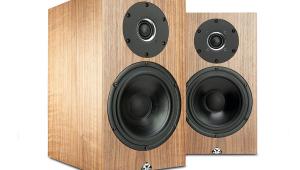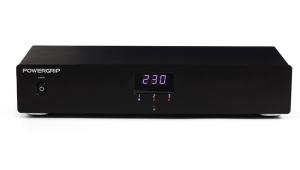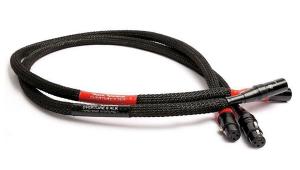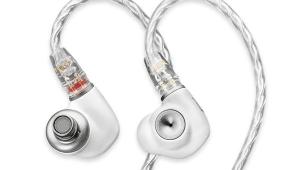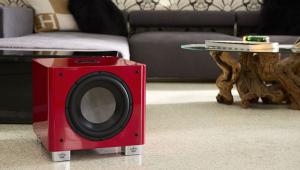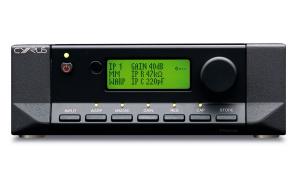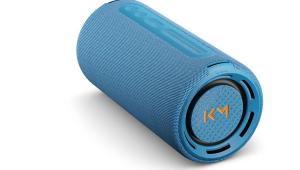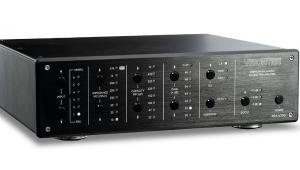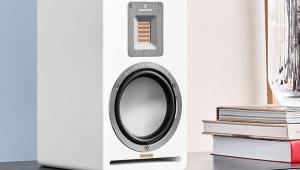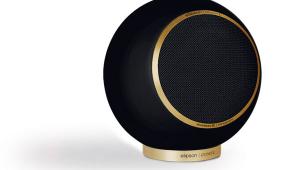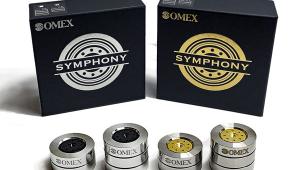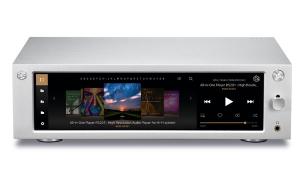Guide to digitising LPs and cassettes

Digitising LPs
and cassettes
LPs and cassette tapes have a place in our hearts, and are capable of producing rewarding audio quality
on a home hi-fi. But while removing an LP from its sleeve, placing it on a turntable and lowering the stylus onto the vinyl is a thrilling experience, it’s not nearly as convenient as selecting a track and pressing the ‘Play’ button on a digital media player.
One of the major issues is the vulnerability of a record to physical damage. One slip of the hand could send the stylus skating over the surface, leaving a permanent scratch that results in the tell-tale repetitive click each time it is played. Similarly, audio cassette and reel-to-reel tape recordings are susceptible to damage from external factors, such as strong magnetic fields or the breaking down of the binder that bonds the magnetic material onto the tape due to poor storage conditions. Magnetic tape that has not been played for some time is also prone to ‘print-through’, which occurs when the magnetic pattern on one layer of the tape copies onto the adjacent layers, resulting in pre and post echoes that are audible during quiet passages. Making a digital copy of your music before any damage has occurred serves as a useful backup to safeguard your investment.

Let’s get digital
Whatever your reasons for wanting to digitise your analogue music, you’re going to need some suitable hardware and software. The analogue source may also need some sort of pre-processing in the analogue domain, which is a fancy way of saying it might need some amplification and equalisation! You shouldn’t need any of this for open reel or cassette players, but it will be necessary for a record deck as the output from the phono cartridge will require RIAA equalisation and some amplification and impedance-matching (the amount required depends on whether the cartridge is of the moving magnet or moving coil type). The exception to this is if you are using a crystal or ceramic cartridge, which requires neither amplification nor equalisation. Most cartridges suitable for 78rpm records are likely to be of this type.
 The next thing you need to do is to convert the analogue signal into a digital one. You can, of course, use the line input on your PC’s sound card as this will take the standard line output from your analogue source, but we wouldn’t recommend this as a PC sound card is unlikely to be of sufficiently high quality for this purpose. Furthermore, you may well run into earthing problems as both your PC and hi-fi will be earthed, and you may well end up with a hum loop. Fortunately, there are analogue-to-digital convertors (ADCs) many of which are very reasonably priced, that will do a far better job and also provide some sort of isolation to avoid potential hum loops. For example, a Xitel INport includes opto-isolators and will produce a CD-quality 16-bit/44kHz digital output via your PC’s USB port from any line input. A bit more upmarket is a NAD PP 4 Digital Phono Preamp with phono/line inputs and both line and USB outputs that can be purchased for under £200 and produces a 16/48 digital signal directly from a MM or MC phono source, as it has all the necessary RIAA equalisation and amps built in.
The next thing you need to do is to convert the analogue signal into a digital one. You can, of course, use the line input on your PC’s sound card as this will take the standard line output from your analogue source, but we wouldn’t recommend this as a PC sound card is unlikely to be of sufficiently high quality for this purpose. Furthermore, you may well run into earthing problems as both your PC and hi-fi will be earthed, and you may well end up with a hum loop. Fortunately, there are analogue-to-digital convertors (ADCs) many of which are very reasonably priced, that will do a far better job and also provide some sort of isolation to avoid potential hum loops. For example, a Xitel INport includes opto-isolators and will produce a CD-quality 16-bit/44kHz digital output via your PC’s USB port from any line input. A bit more upmarket is a NAD PP 4 Digital Phono Preamp with phono/line inputs and both line and USB outputs that can be purchased for under £200 and produces a 16/48 digital signal directly from a MM or MC phono source, as it has all the necessary RIAA equalisation and amps built in.
Finally, you will need some software to record the digital data and save it on your computer in the format you require. This may also allow you to edit your recording, remove noise and split the file into separate tracks. Depending on how you want to store the digital files, you may wish to add MP3 tags that contain detailed information on the track for display on your media player. This isn’t necessary if you wish to simply burn the digital file onto a CD for playing on a CD player, but is useful for other formats.

Starting to record
It is always best to save your initial recording in the highest resolution possible. This will be dictated by the hardware you are using. Many of the devices will produce 16/44 or 16/48 PCM data that can be saved by your recording software as uncompressed WAV files. If you have access to a high-end analogue-to-digital convertor (ADC), you can save your files in higher resolution, such as 24-bit and higher sampling rates of 88kHz or 192kHz. From these, you can then produce the other formats as required.
Usually, the ADC comes with some recording software for your PC, or you can use your own. A word of warning when using your own software – if the hardware can support higher recording rates, make sure your software is fully compatible with your ADC. Some software can only record at 16/44 CD quality.
Whether you are recording from cassette or LP, it is very much like recording a ‘live’ session that is potentially subject to unwanted interference. This may be due to the limitations of the analogue media, such as tape hiss or record surface noise. Or it may be a result of external factors, such as a click from a refrigerator switching on or the dreaded beeping from a mobile phone being picked up by your sensitive phono stage! The latter issue will probably render the recording useless and you’ll have no alternative but to start the process all over again. Other things, such as tape hiss and a scratch on a record, you can’t do anything about, but you may be able to effectively cure it by software – see later. Whatever the issue, it is wise to monitor the recording carefully at this stage and we recommend the use of headphones as this tends to be more analytical and you have less chance of missing something that you may want to deal with later. Have a pen and paper handy to write down the exact time that a noise occurs as this will help you find it again when you come to edit your recording later. Don’t try and break your recording into separate tracks at this stage. Just record each side of a record or cassette and you can then use your editing software to break it into tracks later.
 Editing your recordings
Editing your recordings
There is a vast amount of audio editing software available, ranging from free downloads to bespoke products that offer a wide range of facilities. All of them allow for some basic functions, such as splitting the file into individual tracks. Some software can do this automatically by detecting extended quiet passages, but be careful when using this as they often set the start of the next track at the start of the music, rather than leaving a short pause before it starts. If you use the automatic facility, make sure you can make fine adjustments to the position before saving the tracks.
If your records have a significant amount of surface noise or there is excessive tape hiss, some software will allow you to filter this out to some extent. Use this with caution, however, as it will inevitably filter some higher frequencies and reduce the overall quality of the sound to some degree.
Another issue with records will be clicks and pops caused by scratches, dust or static. Again, the software may have a facility to attempt this automatically, but the results are somewhat variable. If you have the time and the patience, the best way is to do this manually. Using the notes you took during the recording, you can quickly find the offending click on the waveform as it usually shows up as a short spike. Using the software, simply highlight the offending spike and delete it. Yes, you have effectively shortened the recording by doing this, but given that it is usually a fraction of a millisecond, you really won’t notice it – honest! Slowly work your way through the entire piece and at the end of the process, you will have a recording that can actually sound better than the original!

Playing tag
You now have a folder containing the nicely edited WAV files. If all you are planning to do is produce a CD of these, then stop here as you can simply copy these into your audio CD burning software. If, however, you want to use them with a media player or streamer, you will want to convert them to a more efficient format that will save space and is compatible with your player. Once you have converted them, these formats (unlike WAV
and CD) have the ability to store additional information in the file, such as cover art, title, artist, etc, that can be displayed on your player’s display screen. These are known as MP3 tags and software is available that can add them either manually or automatically.
Software exists that accesses online databases, matches the waveforms of your recordings with libraries of known recordings and then populates the tag information for you. In my experience, this is surprisingly effective and will save a considerable amount of work. However, this automated process won’t work with more obscure material, in which case the tags will have to be completed manually. Very often, the music player will look for a file called ‘cover.jpg’ or similar in the same folder as the music files and use it as the cover art for the album. This only needs to be a file of about 400-800 pixels square, so it shouldn’t take up much space, but you can use any picture you like for this purpose.
Now that you have put in all this work, make sure that you make a copy of all your digital music on a backup disk. This is preferably an external USB or NAS (Network Attached Storage) drive that you can store remotely from your computer in case the unthinkable happens!
So there you have it – all of your precious vinyl or tape safely stored on your computer and media player. What you lose from going from the master analogue format to a digital format, you will most likely gain from the fact that you have removed many of the imperfections from the original. Plus you now have a safe backup of your investment in your collection of music. Now go try it yourself.
 |
Inside this month's issue:
Q Acoustics 3020c standmount loudspeakers, Perlisten R10s active subwoofer, Quad 33 and 303 pre/power amps, Acoustic Solid Vintage Full Exclusive turntable, newcomer Fell Audio Fell Amp and Fell Disc and lots, lots more...
|














